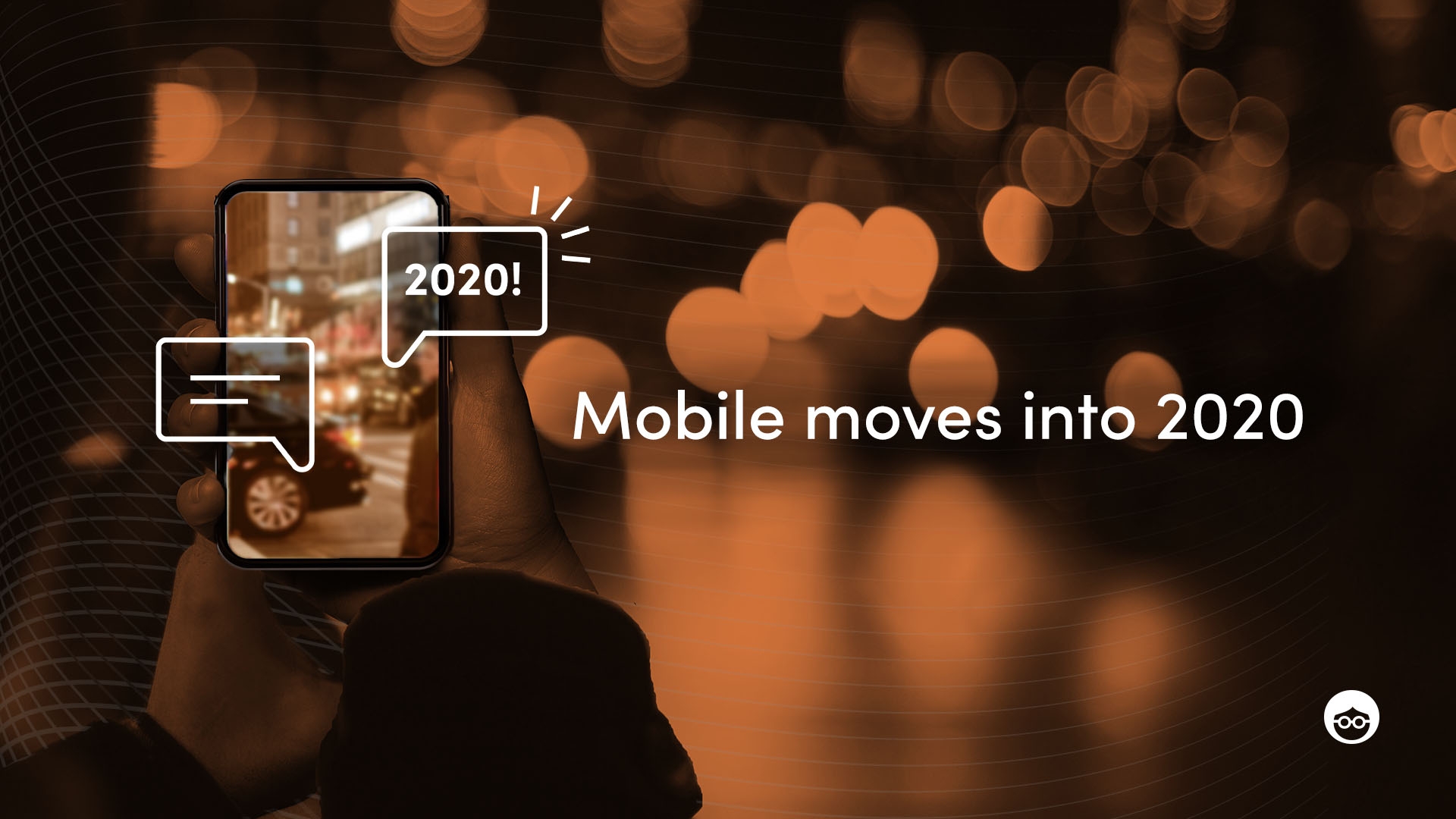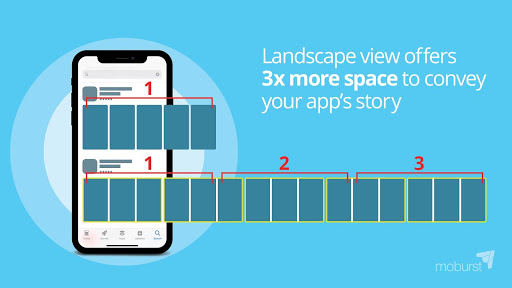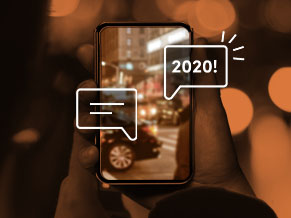5 Key Mobile Marketing Trends for 2020

- Better understanding of your customer’s online journey
- Not all mobile advertising is created equal
- Native advertising will keep getting bigger
- Mobile advertising fraud isn’t going away
- Getting App Store Optimized is an absolute must
With 2020 fast approaching, it’s time to start thinking about how to best stand out from the crowd when it comes to marketing your app. Mobile advertising, especially when it comes to apps, is an ever-evolving game. Whether you’re a leading mobile marketing agency or a newbie promoting your very first app, here are some trends that absolutely must be on your radar ahead of the year to come.
1. Better understanding of your customer’s online journey
Needless to say, analytics has and will always play a huge role in mobile marketing. It is hardly a trend. What will take on more importance in 2020, however, will be the enhanced need for understanding the differences in consumer actions across different channels.
Additionally, with more people owning more devices, the ability to obtain cross-channel visibility of consumer behavior is the only true way to gain any real insight. Thankfully, products exist out there from companies such as Branch and AppsFlyer that are able to provide people-based attribution (PBA) that captures every customer touchpoint regardless of device, platform, or operating system. This is a big deal for marketers, as it will provide an even more clear direction regarding when and where to use which messaging in your advertisements.
PRO TIP: Topline metrics do not tell the whole story. Always take into consideration specific cross-channel behavior when evaluating advertising campaign performance. Facebook ads are very good when it comes to this, and Google isn’t far behind either. Finally, put finding a person-based attribution solution on your to-do list. There are options out there ranging from free versions to the super top-end, so there really isn’t an excuse for not taking advantage of this powerful resource.
2. Not all mobile advertising is created equal
Even behaviors within the same channels can be segmented out to determine the best places and times to serve particular ads. For example, the average mobile user spends over 90% of his or her time within apps versus using a mobile browser. As a result, advertisers will need to be more strategic with their ad placements in 2020.
Given that the vast majority of online mobile time is spent in-app, advertisers looking to use display ads may want to consider focusing their advertising within apps as opposed to simply advertising on mobile browsers. One of these types that has proven effective to consider is the interstitial ad. This ad type is most commonly recognized as the ones that appear and cover the entire screen when an app is opened or during natural transition times when the app is in use. Something to consider, however, is that interstitial ads are a bit more on the expensive side compared to traditional banner ads. With that said, you do get what you pay for, as they can offer a click-through rate (CTR) 18x higher than banner ads.
PRO TIP: Give the placement portion of your advertising strategy the proper amount of attention, and create the correct creatives for those platforms. If you’re going to advertise in-app, don’t use the same banners you would for mobile browsers.
3. Native advertising will keep getting bigger
Another mobile advertising trend that will continue to develop in 2020 is the increased use of native ads that usually appear as sponsored or branded articles, recommendations, and blog posts. These advertisements continue to prove very effective as they are perceived as non-intrusive and useful to those viewing them.
Also referred to as content marketing, native advertising helps strengthen consumer trust and affinity by providing added value to consumers searching for certain information, while not getting in the way of their overall mobile experience (including in-app). Native ads typically don’t push viewers to make a buying decision right there on the spot. Consequently, by being cycled back up into the consideration portion of the marketing funnel, consumers are given another chance to become even more familiar with the brand and thus more apt to convert later on when they are re-marketed to with an ad containing a more direct response call-to-action.
PRO TIP: Don’t be afraid to tap the brakes when advertising to consumers. Take the time to cycle them back up into the higher part of the marketing funnel and give them more time for consideration. Native advertising is especially effective at doing exactly this. Get imaginative with your content too when coming up with ways to stand out from the crowd with added value. Think about producing infographics, guides, or even videos if authoring articles isn’t your thing. It may require more time and effort, but the quality of loyal and trusting customers you’ll end up with in the end will certainly justify the investment.
4. Mobile advertising fraud isn’t going away
It goes without saying that fraud is hardly a new trend, however, we would be remiss not to include it in this list. Consequently, as the industry matures more and gets more sophisticated, we expect fraud to only get more advanced, thus resulting in false data that makes it difficult to determine campaign success. Yes, mobile marketing platforms are getting better at mitigating fraud, but remember this is a cat and mouse game.
Making matters even more challenging for marketers is the fact that mobile advertising fraud rears its ugly head in ways beyond the common CPM and CPC varieties. Some of these include:
- Fraudulent traffic through the use of bots that create fake user profiles in order to generate fake installs.
- Registration fraud whereby bots follow up their fake install of the app with simulated user behavior in order to fool marketers into running more campaigns.
- Ad stacking fraud, an expensive in-app fraudulent practice that involves multiple ads being “stacked” on top of one another. Although only the first one is visible to the user, all ads are paid for by the advertiser, regardless of where they are in the order.
PRO TIP: Know that fraud exists, recognize that it’s out there and it’s not going away, and don’t think you can hide. If anything, fraudsters are only going to get more creative in their attempts to deceive. Find an excellent attribution partner who can tell you the source of all those clicks and installs. If one is beyond your means, then at the very least make sure you’re actively benchmarking yourself to better understand and discern if your campaigns are genuinely successful.
5. Becoming App Store friendly must be a top priority
What is your app store optimization strategy? You need one. Just listing your app and hoping people will find it is not enough, even if you are spending time and money to promote it online. People are spending more time in app stores than ever before, so consequently, your app store optimization (ASO) needs to be a top priority in any marketing campaign.
Formulating a successful ASO plan may seem a bit daunting at first, especially for the novice, but hitting on the following points can certainly help lead you down the path to success:
- Optimize your app store page’s metadata. This includes your app’s description, its preview video, and of course its screenshots.

- Make your app more findable. Put in the time to research not just how your app, but also your competitors’ apps are being found, and optimize for the best keywords.
- Generate momentum with more positive reviews. This one can be tricky but can be achieved if done the right way. Try to find your most active users and connect with them at times when they are most likely satisfied, such as right after they have converted, and ask them to share their experience. Be persistent but don’t pester.
- Test your app store page. Don’t just create it, set it, and forget it. Continuously use A/B testing to improve your conversion rates. Is your app store more effective when written in blurbs? Is your icon memorable? Are you using your screenshots as the valuable advertising real estate they are to tell a compelling story? The only way to know for sure is to experiment through multiple versions and testing.
PRO TIP: Test, test, test. Really put in the effort to find out what’s affecting conversions when it comes to the presentation of your app store listing. Take advantage of the Google Play Experiments tool for Android. Unfortunately, iOS doesn’t offer a free product of its own so you’ll need to invest in third-party solutions such as Splitmetrics or Storemaven. From screenshots to icons, or even how your app’s name is written, you might be surprised how a tweak that appears insignificant on the surface can make a difference. Chances are you’ve made the investment into making sure your app’s UI/UX is as optimized as possible, so doesn’t it make sense that your ability to be found should be as well?
When it comes to marketing your app for 2020, the key to success is anything but one-size-fits-all. With the rapid emergence of the latest and greatest new technologies and tactics (both those working for and against you), saying that you must stay ahead of the curve is quite the understatement. However, as the expression goes, a house is only as strong as the foundation it’s built on, so get a firm grip on these core trends now, and ensure yourself that 2020 is a success.
What mobile marketing trends are you expecting to play a big role in 2020? Let us know in the comments below.












